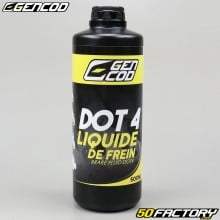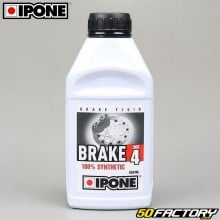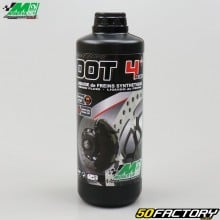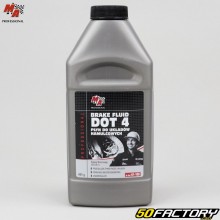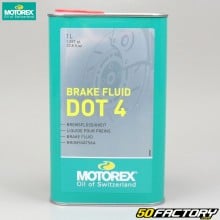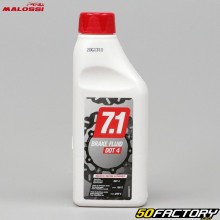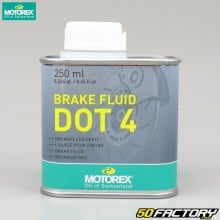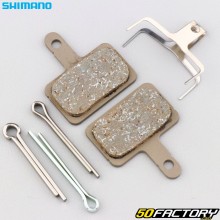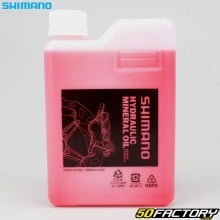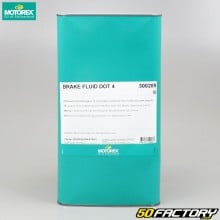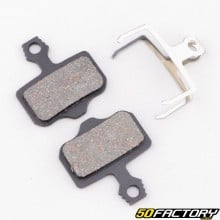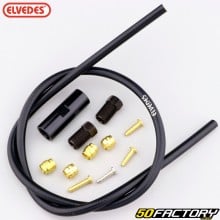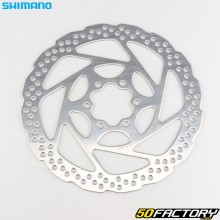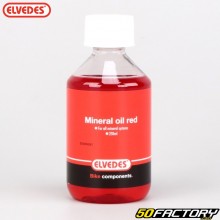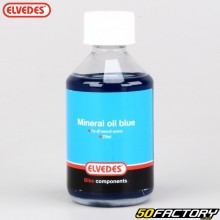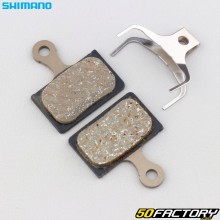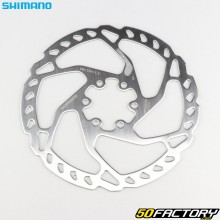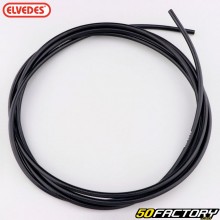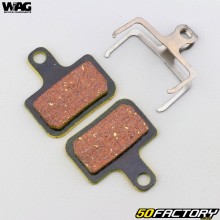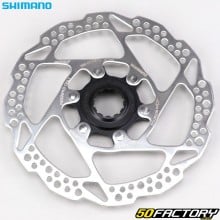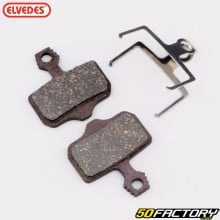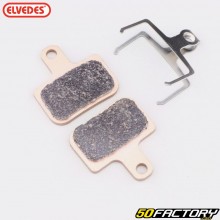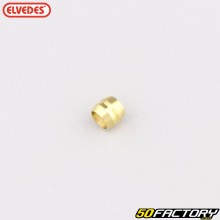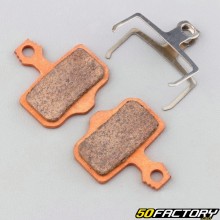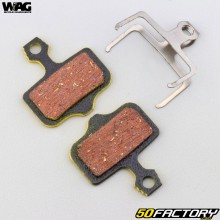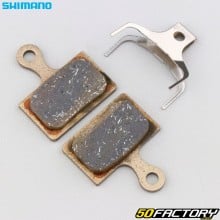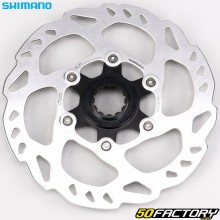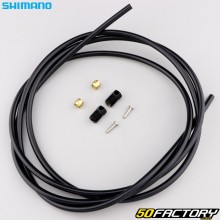 Disc brakes
Disc brakes
- IN STOCK5€90
- IN STOCK11€00
- IN STOCK9€00
- IN STOCK6€90
- IN STOCK10€40
- IN STOCK5€50
- IN STOCK17€00
- IN STOCK9€10
- IN STOCK9€30
- STOCK EXHAUSTED7€80
- IN STOCK21€10
- STOCK EXHAUSTED10€10
- IN STOCK68€30
- IN STOCK9€00
- IN STOCK9€70
- IN STOCK7€60
- STOCK EXHAUSTED7€60
- IN STOCK8€30
- IN STOCK5€30
-
- IN STOCK12€40
- IN STOCK8€70
- IN STOCK22€30
- IN STOCK17€90
- STOCK EXHAUSTED18€00
- IN STOCK12€30
- IN STOCK12€30
- IN STOCK9€90
- IN STOCK18€60
-
- IN STOCK22€90
-
-
-
- IN STOCK7€10
-
- IN STOCK0€60
- IN STOCK8€70
-
- IN STOCK14€90
-
- IN STOCK29€40
Le disc brake for gravel and cyclocross is a topic of utmost importance for enthusiasts of these disciplines. Due to the varied and sometimes extreme conditions encountered in these types of cycling, having a reliable and efficient braking system is essential. In this article, we will explore in depth the operation, advantages and disadvantages of disc brakes for gravel and cyclocross, and provide practical advice on the selection, maintenance and optimization of these braking systems.
Understanding Disc Braking for Gravel and Cyclocrosscross
What is disc brake system?
The disc brake system for gravel and cyclocross is made up of several key components: a metal disc (called a rotor) attached to the wheel, brake pads that pinch the disc to slow the wheel, and a caliper that holds the pads and pushes them against the disc. This system works by converting the bike's kinetic energy into heat par friction, which slows or stops the bike. It is a very effective braking system, offering great power and good braking modulation, two key elements for safe and controlled riding.
Brake system for gravel and cyclocross
For gravel and cyclo bikescross, disc braking offers superior performance par compared to traditional rim brakes. These disciplines involve varied terrain, including paved roads, muddy trails and gravel paths, where the reliability and efficiency of disc brakes are particularly beneficial. Disc brakes are less affected byar mud and water, making them an ideal choice for these environments. In addition, they offer better braking performance in all weather conditions, making them essential for these disciplines.
Hydraulic vs Mechanical Brake
There are two main types of disc brakes: hydraulic and mechanical. Hydraulic brakes use brake fluid to transmit the force from the brake lever to the caliper, providing precise modulation and superior stopping power. In contrast, mechanical brakes use a cable to operate the caliper, making them easier to maintain but less powerful and less adjustable than hydraulic systems. Choosing between these two types of brakes will depend on your personal preference, skill level, and how you plan to use your bike.
The advantages of disc brake system
Performance and security
Disc brakes provide superior stopping power and better modulation, allowing for more precise control of the force braking. This is especially important on steep descents or technical terrain, where precise control is essential to avoid accidents. Additionally, disc brakes are less likely to fail in wet or muddy conditions, improving safety. They are also more effective in emergency braking situations, which can mean the difference between a safe ride and an accident.
Reliability and durability
Disc brakes are known for their durability. Unlike rim brakes, they don’t experience wear from direct friction on the rim, which extends the life of the wheels. The rotors and brake pads are designed to withstand extreme conditions and require less replacement, making them a reliable choice for gravel and cyclocross riders.cross. In addition, the ability of disc brakes to resist heat and dissipate it quickly allows them to optimize their performance over long distances or during intense outings, which is an undeniable advantage for gravel and cyclo enthusiasts.cross.
Disadvantages of disc brake system
Weight and complexity
One of the main drawbacks of disc brakes is their weight. Disc brake systems are typically heavier than rim brakes, which may be a factor to consider for competitive cyclists looking to minimize the weight of their bike. Additionally, disc brakes are more mechanically complex, which can make them more difficult to install and maintain for novices. It's also worth noting that adjusting to disc brakes may require some adjustment time, especially for those accustomed to rim brakes.
Cost and maintenance
Disc brakes, especially hydraulic models, are often more expensive than rim brakes. The initial purchase cost can be higher, and replacement parts like pads and rotors can also be more expensive. Additionally, maintaining hydraulic brakes requires specialized knowledge and can incur additional costs if you need to call a professional for repairs or brake fluid flushes. Par Moreover, the process of replacing disc brake pads is more complicated and time consuming than that of rim brakes.
How to Choose the Right Brake System
Choose according to your driving style
Choosing the disc brake system for gravel and cyclocross depends largely on your riding style and the conditions you ride in. If you regularly compete in cyclo racescross or gravel rides on technical and varied terrain, a hydraulic system might be the best option due to its power and modulation. For those who value simplicity and easy maintenance, mechanical brakes may be more appropriate. It is essential to carefully assess your needs and preferences to make the choice that is best for you.
Choose according to your bike type
It is also important to choose a disc brake system for gravel and cyclocross compatible with your bike type. Some frames and forks may not be designed to accommodate disc brakes, especially older models. Make sure your bike is compatible with the type of brakes you plan to install, and check the manufacturer's specifications if necessary. Also consider the weight and wind resistance of your bike, such asar These factors can influence braking efficiency. Finally, don't forget your budget, car Cost can vary considerably between different braking systems.
Maintenance and optimization of your brake system
Importance of Brake Maintenance
To ensure efficient and safe braking, maintaining your disc brakes is an aspect that should not be neglected. A well-maintained brake system not only improves the performance of your bike, but also extends the life of its components.
How to maintain your brakes
Regular maintenance of your gravel or moped disc brakescross is essential to ensure their performance and durability. For hydraulic brakes, this includes checking and possibly bleeding the brake fluid to prevent air bubbles from forming. For mechanical brakes, it is important to check the condition of the cables and replace them if they are worn or frayed. In all cases, make sure that the rotors and pads are clean and in good condition.
Optimizing your braking system
In addition to regular maintenance, optimizing the disc brakes of your gravel and cyclocross can improve performance. This may include adjusting the calipers for perfect alignment with the rotors, or choosing pads that are right for your riding conditions.
When to replace brake parts
Brake pads should be replaced when they are worn to the point where the lining thickness is less than 1 mm. Rotors should be replaced if they are warped or if their thickness is less than the recommended limit par the manufacturer. In general, it is advisable to check the condition of your brakes before and after each ride, especially if you ride in difficult conditions.
Brake parts: Pads and calipers
Brake Pads: Types and Choices
There are several types of brake pads, including organic, semi-metallic, and metallic. Organic pads provide good modulation and are quiet, but wear out more quickly. Semi-metallic pads are a good compromise between durability and performance. Metallic pads are the most durable and provide excellent stopping power, but can be noisy and less modulation. It is essential to choose the right pads based on your specific needs, the terrain you ride on, and the weather conditions you frequently encounter.
Brake Calipers: Operation and Selection
Brake calipers can be single, dual, or quadruple. Quadruple calipers provide more stopping power and modulation, but are heavier and more expensive. Dual-piston calipers are lighter and less expensive, but provide less stopping power. Caliper choice depends on your performance needs and budUsing four-piston calipers may be beneficial for those seeking maximum stopping power, while two-piston calipers may be sufficient for those prioritizing lightness and simplicity.
Tips for selecting and maintaining pads and calipers
The choice of brake pads and calipers should be guided byar your specific needs, your riding style, and the type of terrain and conditions you typically ride in. Once components have been selected, regular maintenance is crucial to ensure their optimal performance and durability. This includes regularly cleaning pads and calipers, checking pad wear, and replacing parts when necessary.
Choosing and maintaining your brakes with 50 Factory
At 50 Factory, we offer a wide range of disc brake components for gravel and cyclocross, including high quality pads, calipers and rotors. Our experts are available to advise you and help you choose the parts best suited to your needs. Please feel free to browse our online catalog and contact our customer service for any assistance. We are committed to providing you with high quality products and exceptional service to help you get the most out of your bike.



























